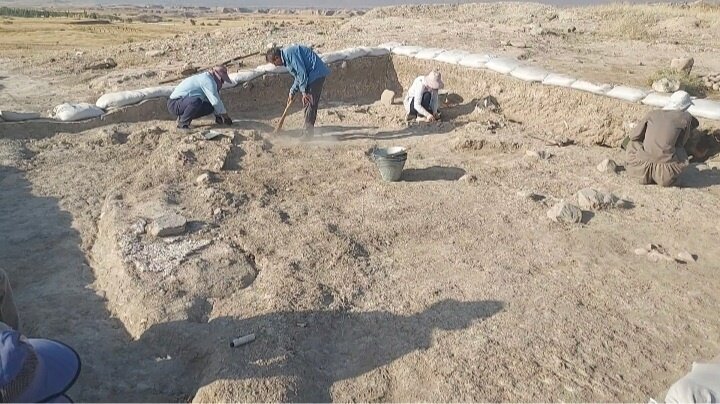Chogha Golan: archaeologists shed new light on origins of village life in central Zagros region

TEHRAN - Chogha Golan, a Neolithic archaeological site located in the foothills of the Zagros Mountains in Ilam province, has yielded significant findings during the second season of excavations.
Led by Hojjat Darabi, an associate professor of archaeology at Razi University in Kermanshah, the research is part of a long-term initiative to study early human settlement patterns.
According to Darabi, Chogha Golan’s extensive and continuous occupation history, dating back approximately 12,000 to 9,500 years, makes it a unique and invaluable site for understanding the transition to settled agricultural communities.
The recent excavation season focused on horizontal exploration, revealing well-preserved architectural remains. Notable discoveries include small, angled rooms constructed from mudbrick and wattle-and-daub with gypsum-plastered floors, as well as evidence of early gypsum production. These findings provide critical insights into Neolithic architectural practices and industrial activities.
“Chogha Golan represents the earliest known site associated with the dawn of agriculture and village life not only in Ilam province but across Iran,” Darabi stated. He emphasized the importance of continued, systematic research at the site to unravel unanswered questions about the agricultural revolution in the Zagros region.
Darabi also highlighted the potential of Chogha Golan to become a significant cultural heritage landmark.
Plans are being considered to transform the site into an open-air museum and research center, with the ultimate goal of securing its designation as a UNESCO World Heritage site, the archaeologist noted.
The excavations, conducted with the approval of the Research Institute of Cultural Heritage and Tourism and supported by the Ilam Department of Cultural Heritage, Tourism, and Handicrafts, aim to uncover insights into the origins of agriculture and village life in the central Zagros region.
According to sources, Chogha Golan is particularly notable for the early domestication of emmer wheat, dating to around 9,800 BP. The archaeobotanical remains from Chogha Golan provide the earliest evidence of long-term plant management in Iran.
Situated in a semi-arid region about 30 kilometers north of Mehran, it is one of the earliest aceramic Neolithic sites discovered in Iran. The inhabitants of Chogha Golan primarily relied on hunting and the utilization of wild plants.
Chogha Golan was excavated jointly by archaeologists from the University of Tübingen and the Iranian Center for Archaeological Research in 2009 and 2010. The site is characterized by a hill rising approximately 7 to 8 meters high and contains 8 meters of cultural deposits.
AM
Leave a Comment